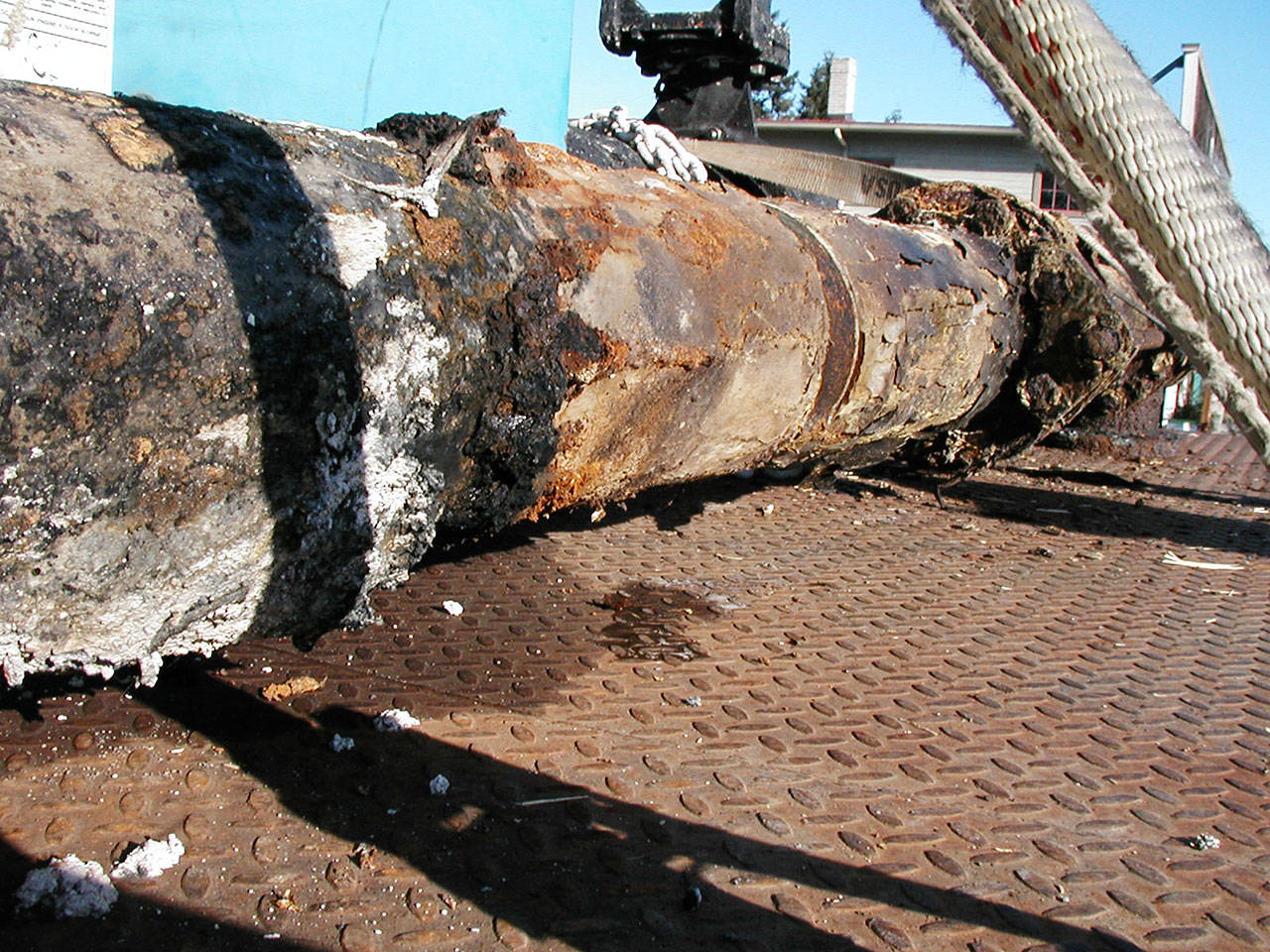Langley is in deep doo-doo if it doesn’t fix its old, crumbling, corroded sewer and water pipes soon.
An estimated $7 million is needed to repair a dozen identified water, sewer and stormwater problems occurring on the city’s east side, in the downtown business district and in other neighborhoods.
Most water pipes were installed in the 1950s through the 1970s and have a lifetime service expectation of about 50 years, said City Councilwoman Dominique Emerson, who heads the Langley Infrastructure Committee that met Monday.
The work group was formed more than a year ago to develop repair project scenarios and identify possible funding sources.
Loans, new property taxes and a grant are being considered as possible ways to pay the large repair bill that’s a result of years of “kicking the can down the road.”
The city has submitted an application for a $3-million grant from Island County’s rural counties economic development fund.
The city council could also seek a $4-million levy measure on the November ballot. The cost to a homeowner would be an additional $20 on monthly property taxes for a home valued at $400,000.
The first priority is addressing the residential areas of Edgecliff Drive, including Decker and Furman Avenues, where stormwater drainage is poor to practically nonexistent, Public Works Director Stan Berryman said.
Extending the city’s sewer hookup into areas now using septic systems is also a goal; 30 percent of Langley residents don’t use the sewage system even though their property taxes helped pay for the sewage treatment plant.
The city’s water system, which serves 824 customers, has already undergone numerous repairs this year. Six major leaks sprouted since January, Emerson said. One leak amounted to 100,000 gallons of lost water a day — which is more than the entire city consumes on a daily basis.
“Additionally, we’re having to add chlorine as we’re finding more yellow and brown water,” she said.
A system failure is looming, and one way or the other — either through an emergency piecemeal response or a phased-in repair strategy that’s financed through a combination of funds — the fix needs to happen, Mayor Tim Callison said.
“We need new revenue to do it,” Callison said. “We can plan for it, or we can do it on an emergency basis. We, as a city, could choose to be more proactive than reactive.”
In December, the city council raised utility rates, on average from 6 to 17 percent. But that money covers rising maintenance and operating costs and not capital improvement projects.
Under state law, utilities are broken into separate departments — water, sewer and stormwater — that operate separately with individual revenues. Rates must cover equipment, staff and expenses to operate and maintain the system.
A public hearing about utility infrastructure needs is slated to occur in May, but a date has not been finalized.



